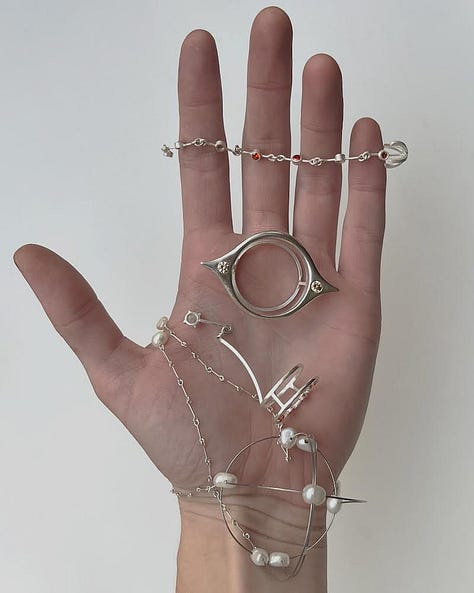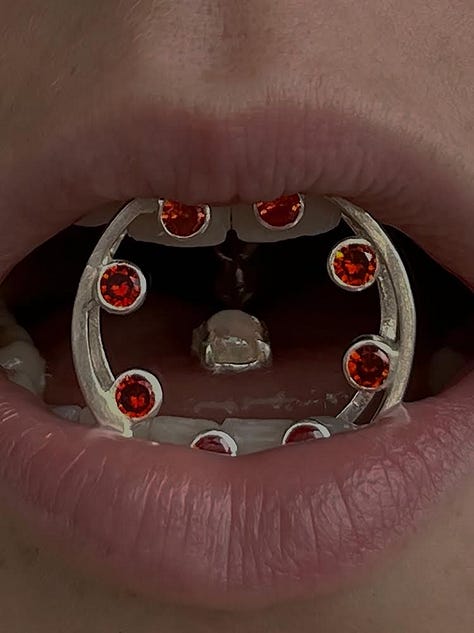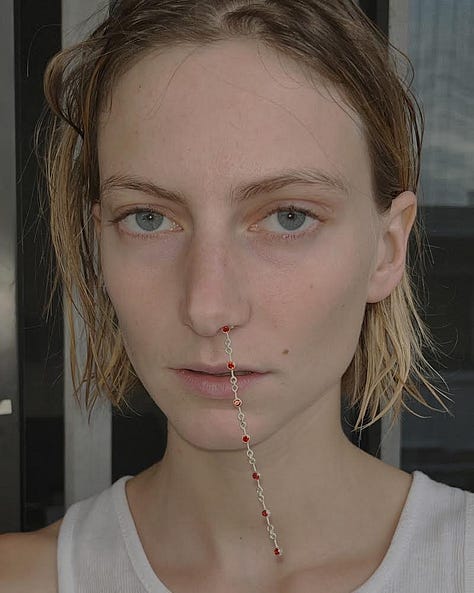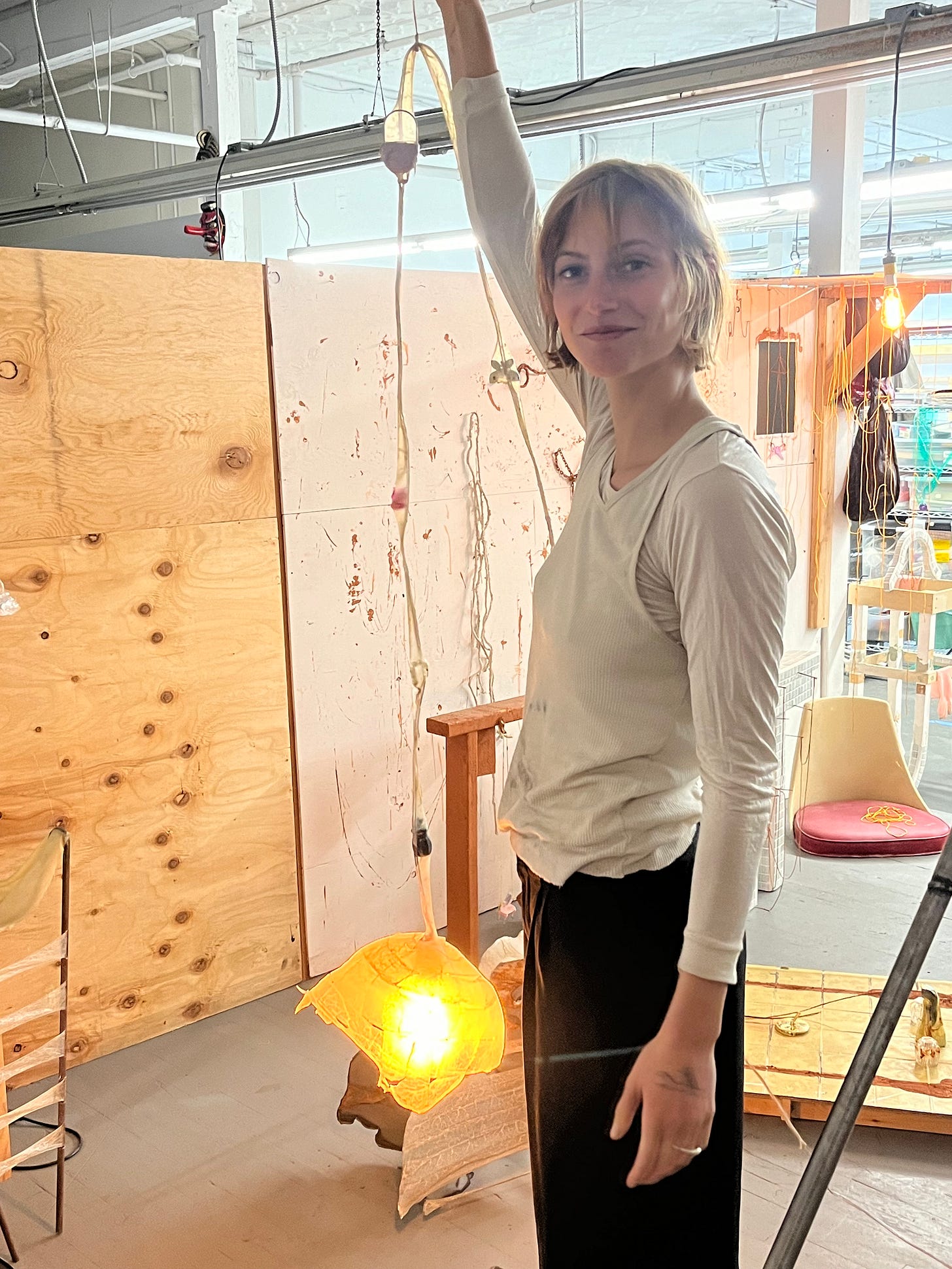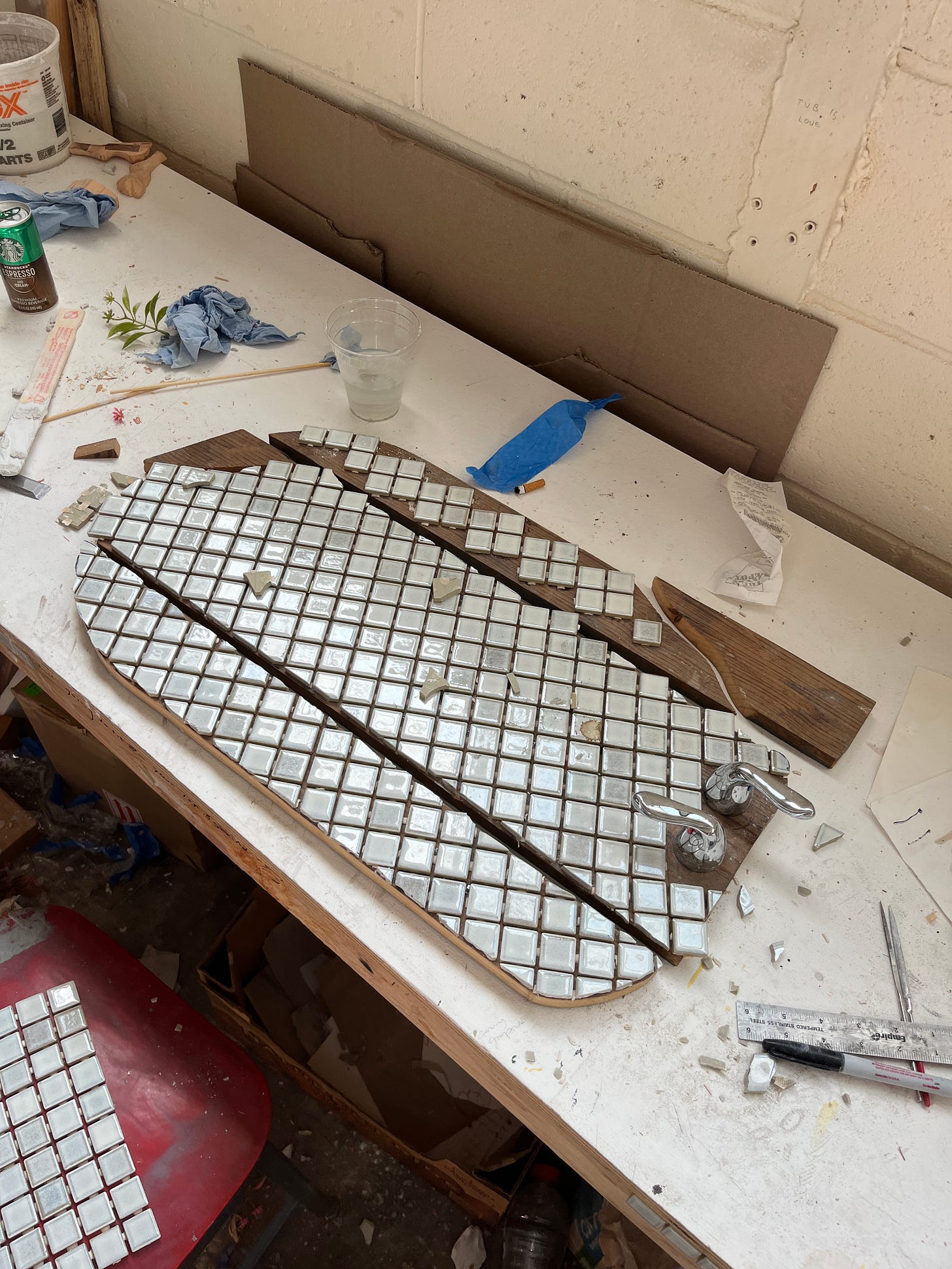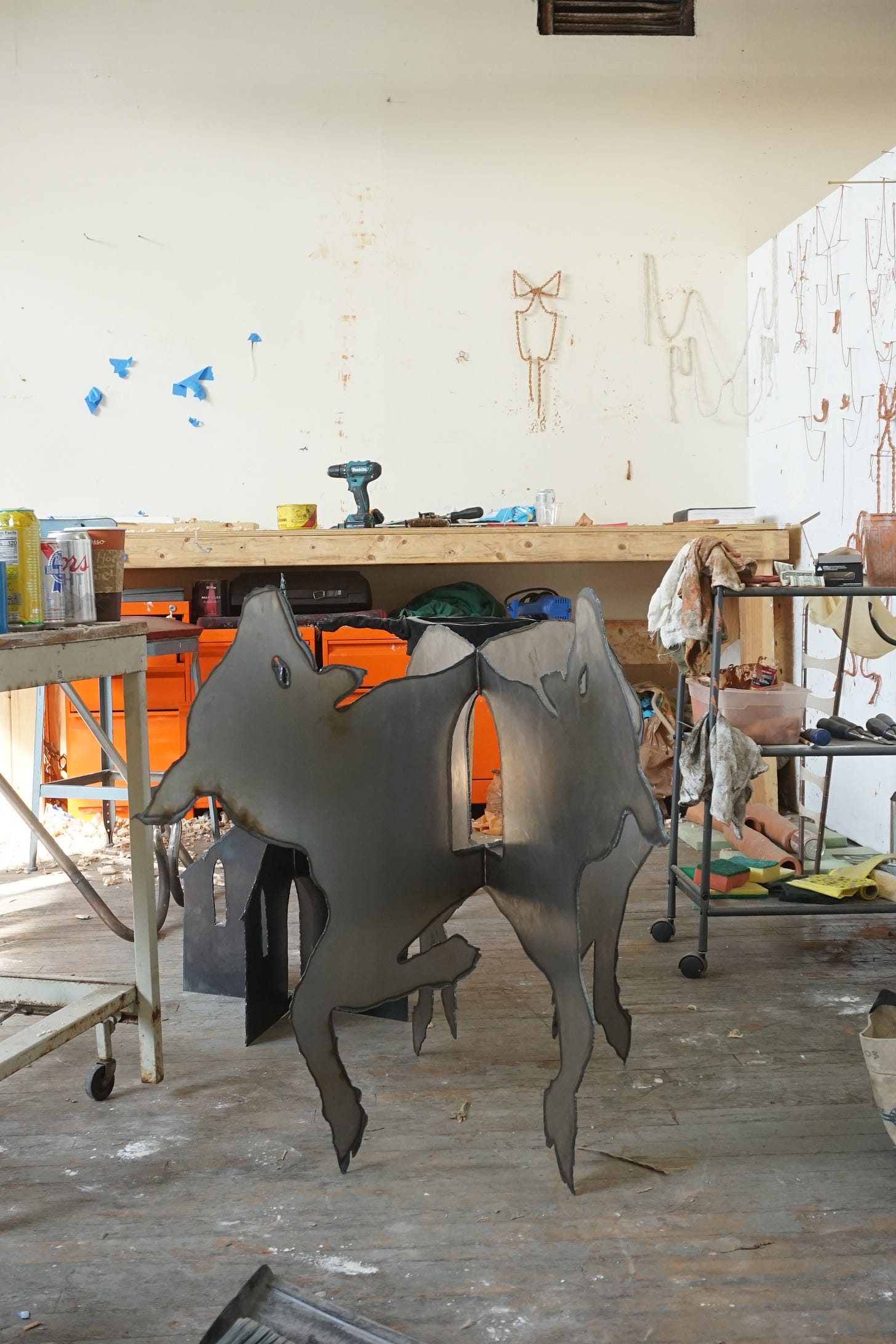SPACES: Marley White
A childhood church window, material as a language, expanding your practice, a bathtub of live fish and a thriving artist community in DTLA.
Marley is a multidisciplinary artist based in Los Angeles. Her diverse range of sculptural work, shaped by her background in metalwork, references her childhood growing up in the south while prompting reflection on the tangible and intangible that shapes our identity. Using material as a language, Marley works with local materials from red clay to pig intenstines stretched over steel evoking tactile sensations and associations.
Sunday Takeout: What’s up Marley. Show me what you’ve been working on!
Marley White: I've been making pieces that reference bathrooms, church windows, the inside of your body and the bottom of a well. Intimate spaces. For a show, I wanted to iterate on a clawfoot bathtub but instead a goat foot shower drain. In Christianity the goat represents sin and devilishness. I made these pieces using drains before, thinking about what's passing through it; the cyclical nature of filth and purity; a constant cycle and the traces of our body.
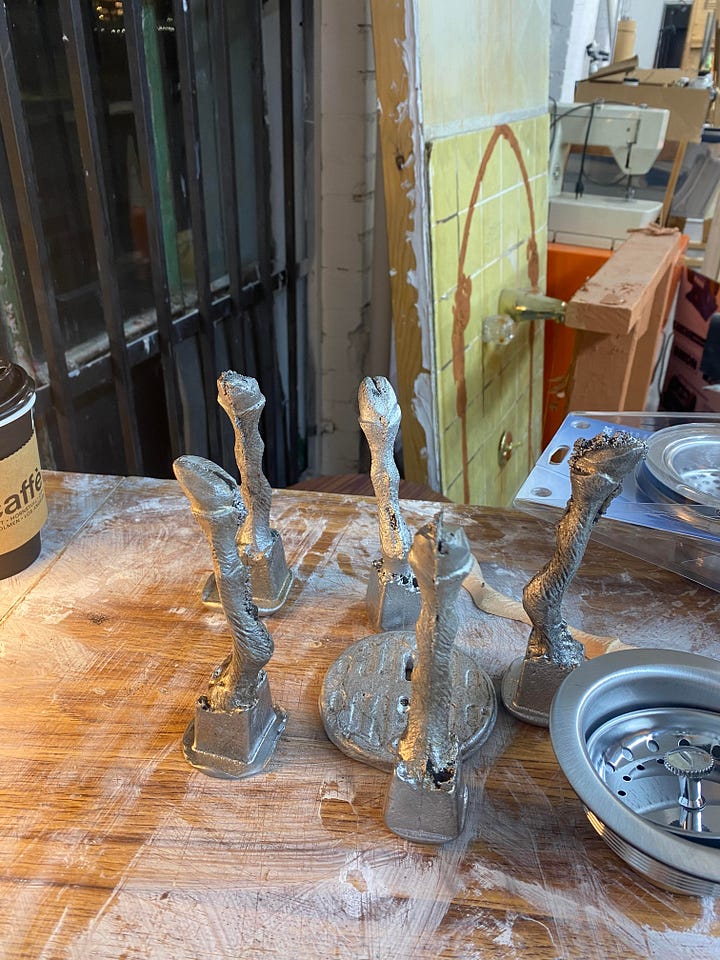
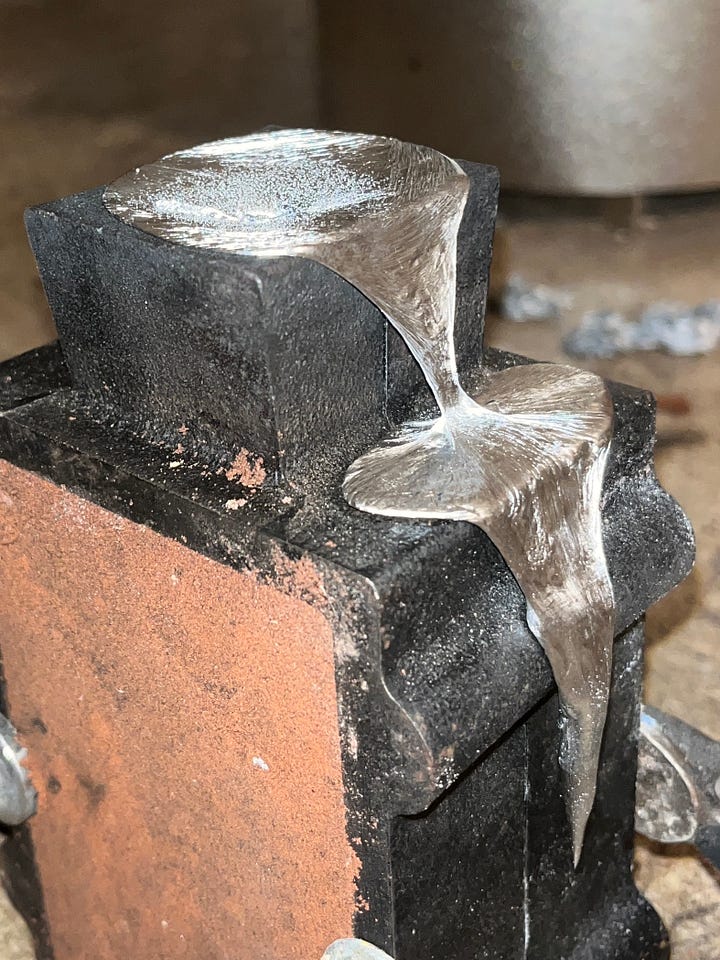
MW: I’ve had these two ideas moving in my work and brain for ages, this feels like the first time they are beginning to bleed together. Communicating through biblical iconography and thinking about memory through a tactile/bodily understanding. In that way, these pieces have so much context of both the body but also experiences and the idea of intimate spaces and vulnerability.
ST: You’ve alluded to your childhood church window in previous work and are now working on a new piece that takes this shape. Can you tell us about its significance and how it ties back to your practice?
MW: The window above the pulpit in the church I grew up in. The bathroom tile is both the view and blocks you from viewing. It’s wild thinking about being little and looking up as the sun caught in the window and being so full of faith, thinking back on adolescent days where I’d be in church and focus on the window to steady my dizzily hungover body, as a young adult feeling indifferent, and now seeing only these reflections. A mirror of how everything continues to change, now and then, it's all still morphing and moving. The moments that catch you and connect you to memories and feelings that feel so distant; almost foreign. It interests me what can cause these catches, these juts of feeling, the associations we have with memories.
ST: It’s like how sights and smells can transport you to a different time/place/feeling. It can be really powerful. I think returning to your childhood home is one of strongest examples of sensory memory.
MW: Yeah. It's cool. And it's also sort of, like, alarming to how, like, we change so rapidly.
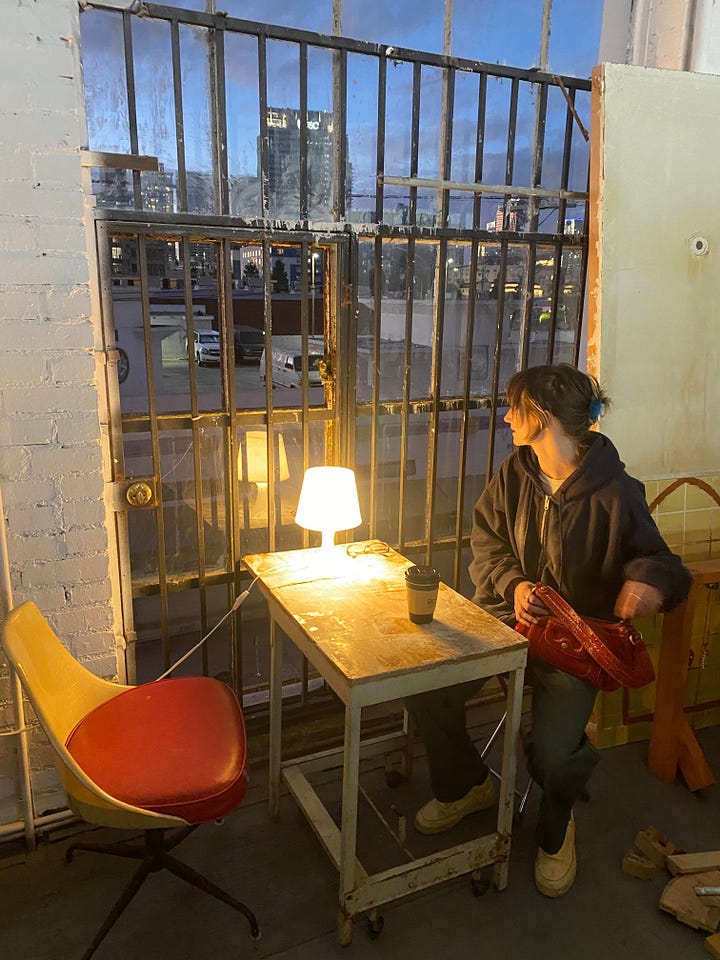
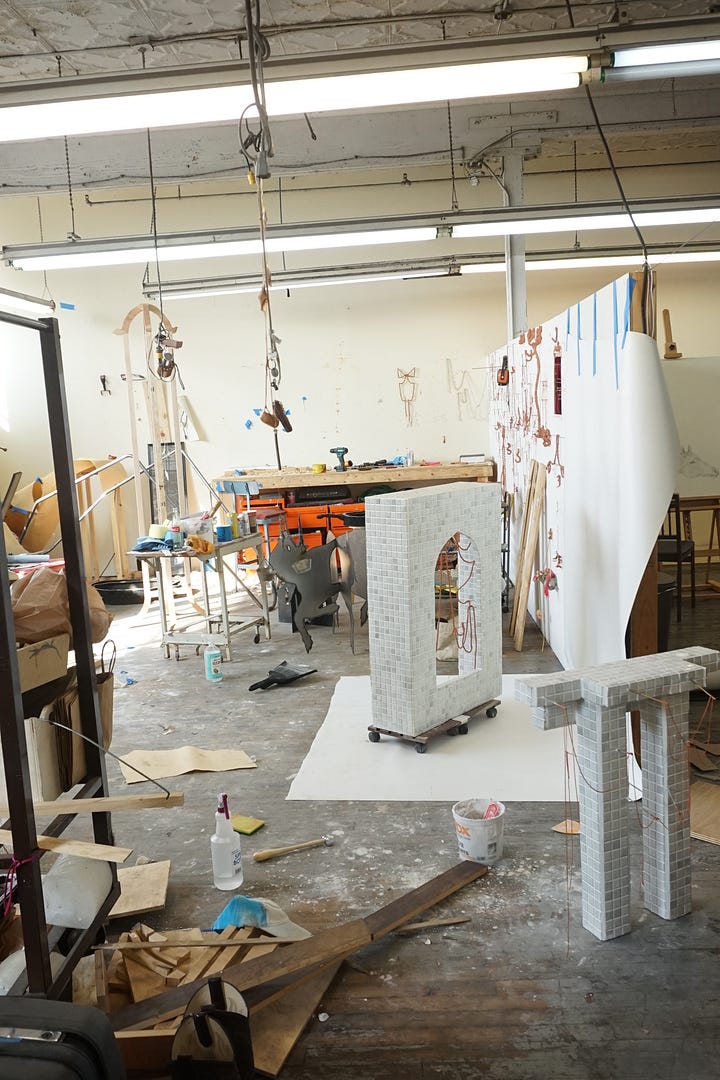
ST: What inspired the transition from creating the internal/external adornments to exploring childhood memories and themes like religion and adolescence?
MW: Since I moved to LA. My work has always centered on the body, from adornment that is made for the inside of your body to a sculpture that communicates through the assumption of how it would feel to touch. In school I made pieces on the body, then, in the Netherlands, I made pieces that go inside the body, in Los Angeles, now, I make work that infers the body. A physical metaphor. Using material language and familiarity instead of language. Doing something internally and then reflecting that externally, literally. One way to look at the work was just seeing how it was interacting with the body, like on the x rays. If you went a little deeper, whether it was like cherries that were hanging in your stomach or like a fig that was up your ass and this diamond coming up; you can see the line that is drawn.
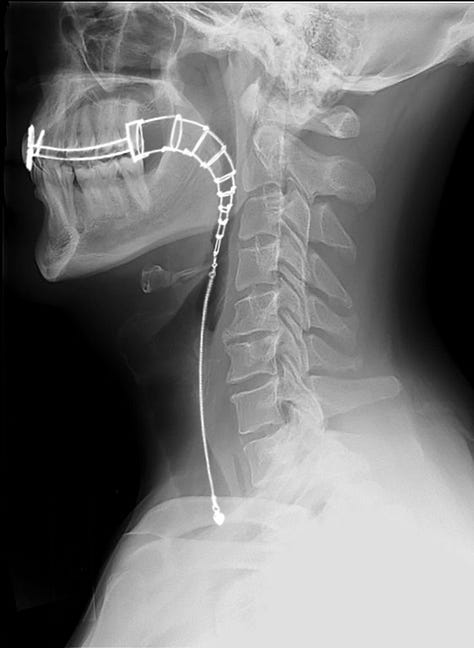


MW: I’ve been thinking about how objects around us still can do that same thing. How our memory of a chair or a window or taste can take you back, we keep these associations and they stick. A bathroom tile, how that feels like on your skin and the associations with that in your body; that being how you understand the narrative in a piece. I hadn't really thought about religion or home, but then it felt like such an honest way to think about whatever ideas were running. Because it’s kind of just how I have experienced it. I’m so heavily using materials that are able to be understood physically, whether it's where your body fits or how you understand touching it. The title or whatever words are around it help me a lot. I’m always writing.
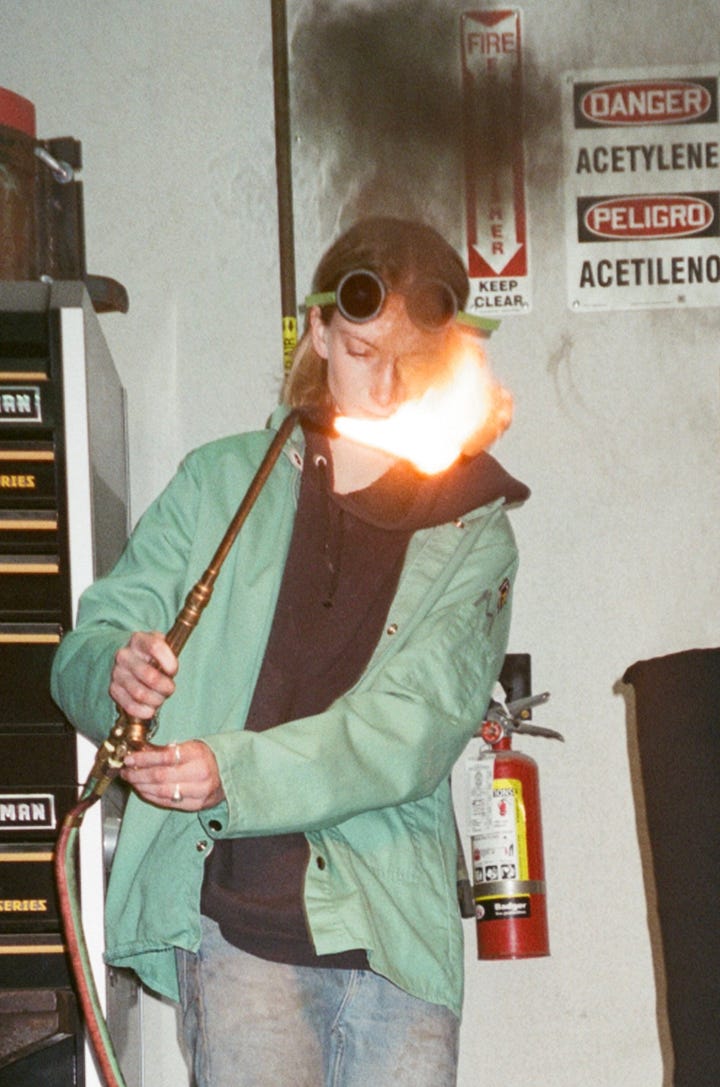
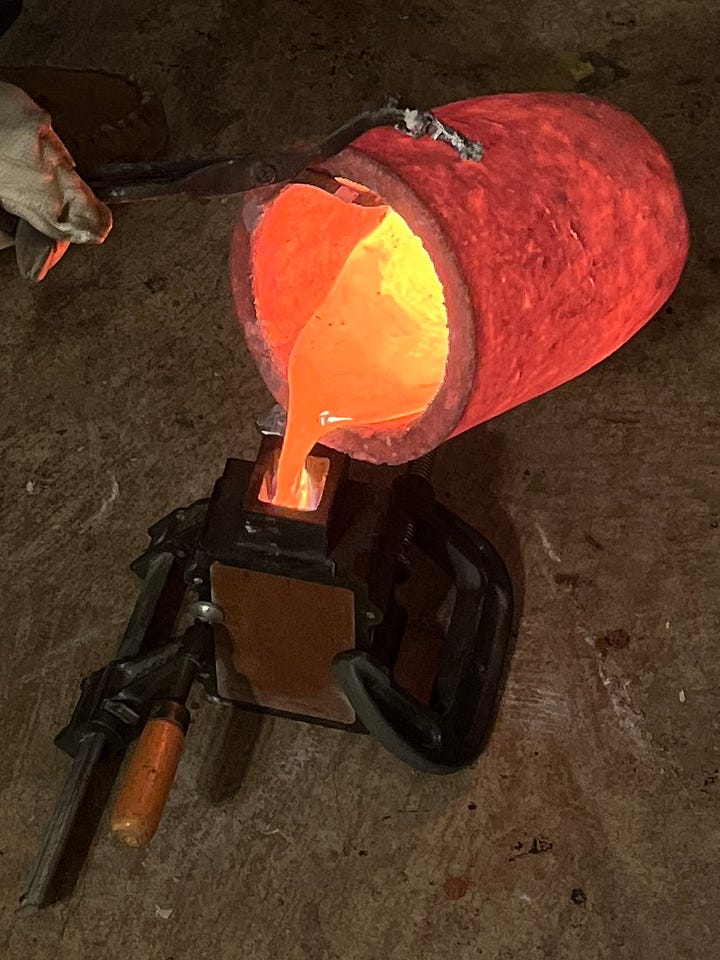
ST: You’re dabbling in so many mediums - what is your background and how would you describe your practice?
MW: I would say sculptural. I guess now I am only making sculpture. My background is pretty craft heavy. I did a lot of woodworking, silversmithing, clay, and metalworking. I can get caught up in a material and a process. But if I'm thinking about this drain, I'm going to be using aluminum because that's what I’m thinking about and that's what I’m wanting you to be thinking about. I like when what it's made of is the initial access point.
ST: So the material you choose to work with is an active part of the conversation you’re having with the viewer. You’re creating with the lens of what they feel like but also what they represent.
MW: I’m a material girl. That’s what gets me jazzed.
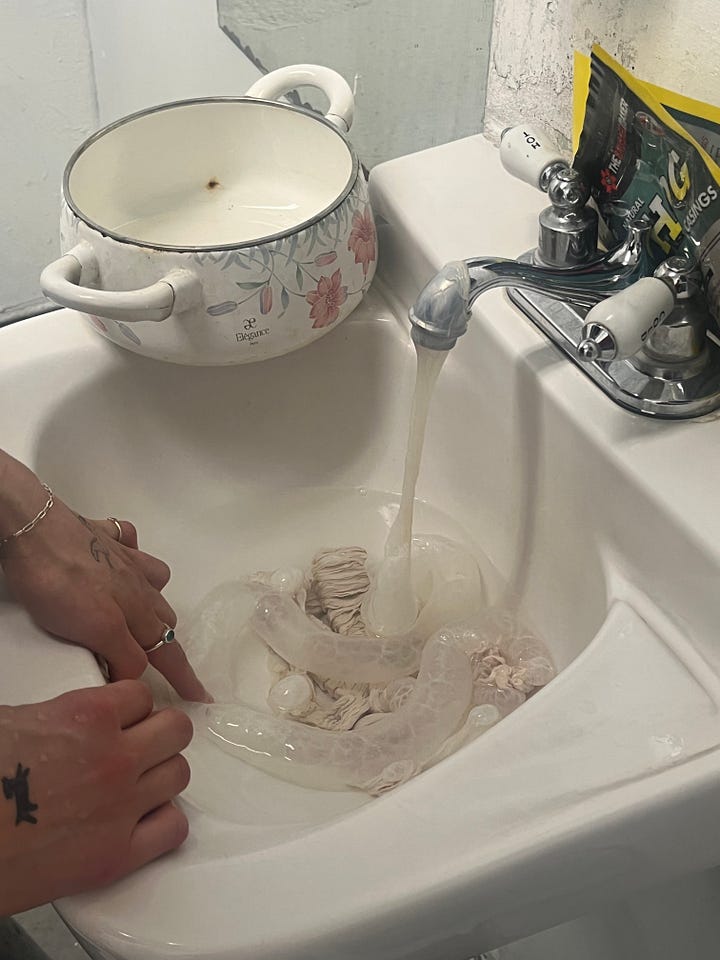
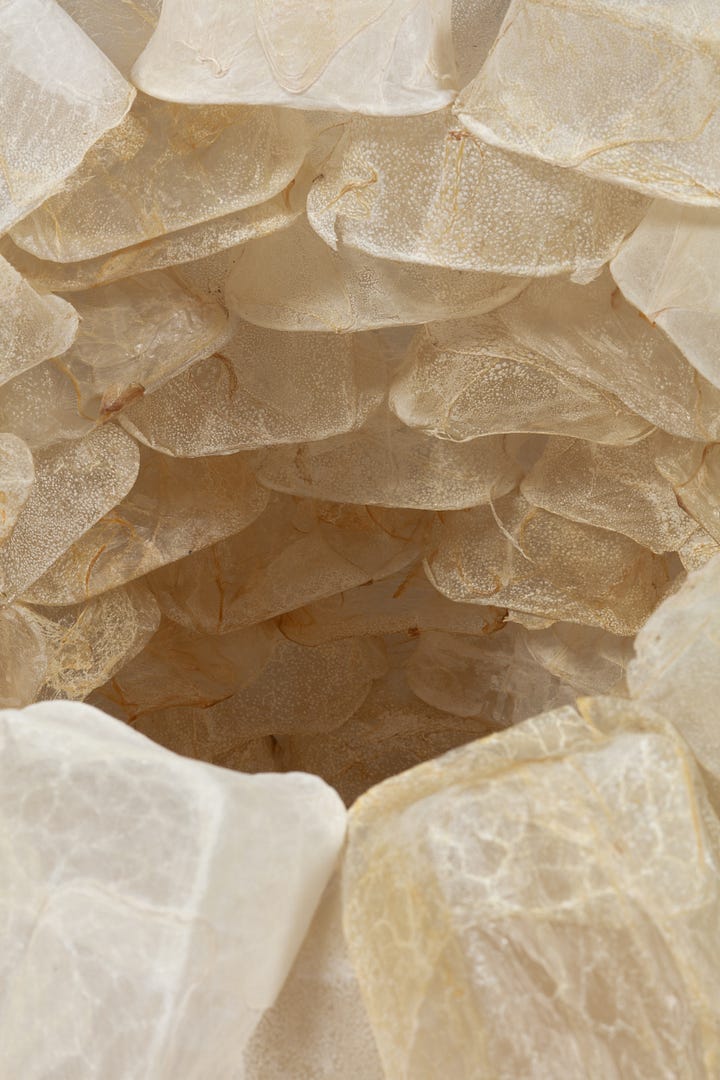
ST: So you’re a new Angelino-ish. What has your experience in LA been like? Has it introduced new themes to your work?
MW: Moving here I had no sense of home. I didn't know anybody/anything. And my actual home didn't feel like home. Thinking about the remnants of home and spaces..I think sort of started here. Wanting to make things that felt significant to your body, what home means to your body; thinking about the home and what are these intimate places if they're not materially in your life? What is the memory of them? What does the experience look like?
ST: You’ve been exploring new mediums recently - music and performance art. Can you tell us about your recent performance piece at the Music for Multiple People album release show?
MW: I was thinking of all these ideas and I wanted to do something that takes time. My grandpa's this incredible storyteller and I wanted to make a piece with him. I called him and proposed the piece. The first thing he taught me was how to fly a fish and we’d go fishing. I haven't done it since I was seven, but I feel like it's still in me. So I was fileting a fish with an electric filet knife, exactly the way he would do it, while he told a story. I don’t know how to describe his voice or his way with words, but his voice comes through the room, deep and as steady as ever. He told a story I’d never known. I wish he coulda been there but maybe it was better that it was over the phone.
MW: It made me start thinking a bit differently about my practice. That’s exciting.
ST: So you're interested in doing more performance pieces?
MW: I think so, yeah. I really want to do this piece where there's a bathtub in a shitty little bathroom. I have the bathroom already figured out, and I'll be on this tall little stool, probably in underwear and a t-shirt, and then just have a bathtub full of fish that are alive, like farm fish. And then just be fishing in the bathtub. I think it will have a similar audio. And I'm thinking it’s work that feels a little bit more like a sculpture in time like you see it in a video. It'd be nice to do something where it's like, it's just the action is the piece. It would be repetitive.
ST: Thinking about the significance of a space whether its your personal connection to it or physically play a part in a piece, is there a dream space that you would want to show your work in?
MW: I’ve been thinking about this idea of doing a piece that is in a home and everything is about what's happening inside of a small house is like part of the sculpture. Maybe you view it from outside through the window. But I think that would be really interesting. I love the idea of fishing in somebody’s kitchen and I’m frying that fish and serving it to the neighbors or something, I don't know.
ST: Wow I love it Marley, please do this.
MW: I haven’t told anyone that idea yet except the person with the house!
ST: A Sunday Takeout Exclusive! Sign me up. Let’s talk about castle castle, an artist-run studio that you and Nick have spearheaded together. What medium are people working with and do you guys ever have the chance to collaborate?
MW: There’s nine of us in here. We have sculptors, painters, photographers and some of us are also all over the place. So there's some overlap but everyone's sort of doing different things. I like seeing what each other is doing and helping each other. We’ll get wax from Scotty and Gago will cast it. Lilly will throw a pot and Scotty will do engravings in it. It's cool it is pretty open with resources and knowledge.
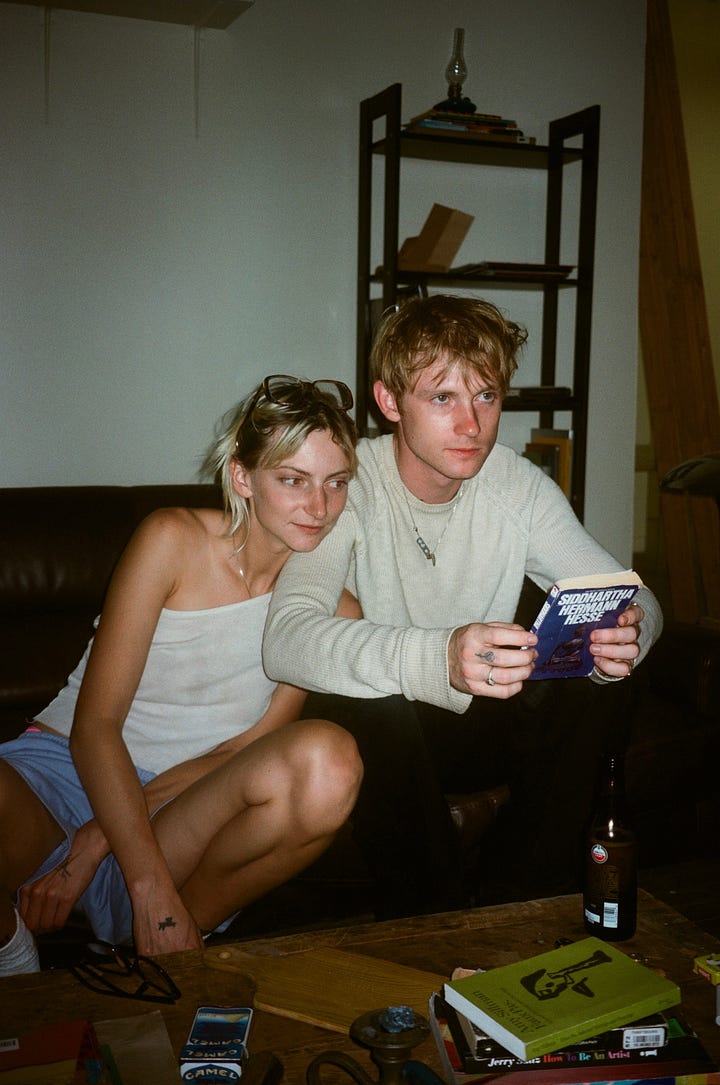
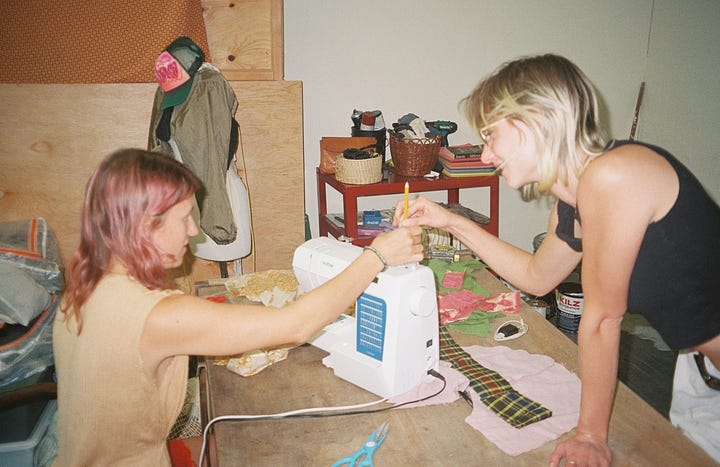
ST: How did you pull this group together? What was the vision behind that?
MW: Finding the right people initially was the hardest part. We wanted it to be a variety of people doing different things and also having people we don't know so well. So it was like having a community expand while working. It happened really naturally and it is such a great group of artists. And almost immediately it became friends and family. Curators will come in and be like, oh what are all these other people doing? Can I have a studio visit with you? And we're like, yeah, hell yeah. It's wonderful to be like, okay this is my work, but also I'm around all these exciting artists that I really respect. I feel like that's such a cool thing for somebody to be excited about a community.
Follow along and see more of Marley’s work at @marley_white .
You can shop Marley’s adornment pieces at The Sunday Market.
